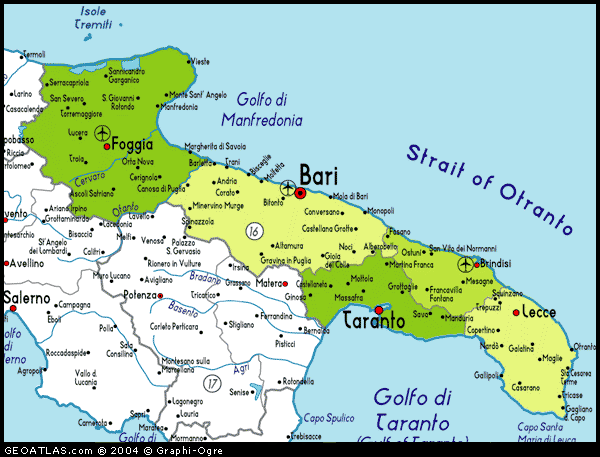More food! (from Italia, natch)
As per request, here are some more photos of food from our trip. It turns out that I don't think I had my camera with me the night that Eric had the fava bean puree and chicory dish (in Basilicata it's made with chickpeas, in Puglia with fava beans). Or I was too shy to take a photo! So, sorry about that...and there doesn't seem to be any photos of this on-line (apparently not a lot of people take photos of traditional Puglian cuisine...)
Here's a few other dishes worthy of photo (and I wasn't too shy).
Did I mention somewhere that the mozzarella di bufala (which is a protected product, DOC type thing) in Campania was really really good?! I had some every day, pretty much, while in Campania. If it's not made from water buffalo but from cow's milk it's called fior di latte (flower of milk, literally) and this has a milder flavor than mozzerella di buffala. Often I had the mozzerella with tomatoes and olive oil, sometimes a bit of something green, arucola or some lettuce (but never basil as we do here). This photo is not of the best example but I ate all the other ones too fast & by the time I remembered the camera it was all gone!

Gnocchi. When we were outside of Basilicata and Puglia usually either Eric or I would order gnocchi. Because, well, gnocchi is just really really good! This one is from Sorrento,

I ate lots of pomodori. They are divine from this part of Italy,

We did have chicory again as contorni (side-dish). It's basically like collard greens or mustard greens, sauteed or braised in olive oil and garlic. A little bit bitter. Chicory is kind-of weedy and we often saw people 'harvesting' it from the side of the road or random, uncultivated fields. It's been eaten around here for a very long time. For example, from Horace (above-mentioned Roman poet; and actually in Venosa they had several signs with quotes from Horace, including this one),
"Me pascunt olivae, me cichorea, me malvae"
[I am nourished by olives, chicory, and mallow]

At a small trattoria in Acaia (also spelled Acaya) served us these small fried bread balls (with a bit of pomodoro in there too) as an antipasto (we ate them so fast that there were only two left by the time I got out the camera),

The following two dishes are also from that trattoria:
This is another traditional Puglian dish featuring chickpeas! Called Ciceri e tria, it is ribbon pasta, some of which is fried (that's the dark pieces you see), and the sauce is a creamy (not really very much cream though if any? more like cheesy) one of chick peas, onions, and cheese.

I don't remember what this was called but the pasta these short, twisted strips with some orchiette looking ones too. Backed with pomodoro-eggplant sauce and cheese.

We had this artichoke antipasto in Rome on our last night, Carciofi alla Giudia (artichoke in the Jewish style, the restaurant is known for its Roman Jewish cuisine). It's an artichoke heart with some of the inner leaves, deep-fried so the outer part was crispy but the inner heart totally nice and tender (maybe they steamed it first?),

Okay. Now I'm hungry. Darn.












































